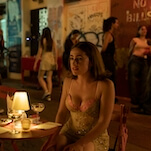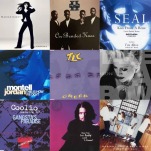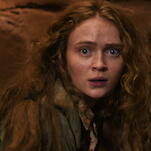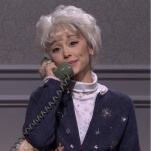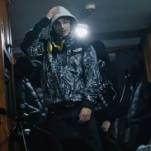The Simpsons (Classic): “Lisa The Beauty Queen”
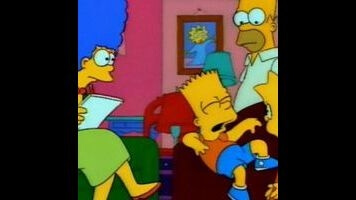
“Lisa The Beauty Queen” (season 4, episode 4; originally aired 10/15/1992)
“Lisa The Beauty Queen” follows three classic episodes of The Simpsons: “Kamp Krusty,” “A Streetcar Named Marge,” and “Homer The Heretic.” Those aren’t just three of the best Simpsons episodes of all time—those are three of the best television episodes of all time. So “Lisa The Beauty Queen” had an awful lot to live up to. Expectations for the show at that point were through the roof; the bar had been set almost prohibitively high.
Moreover, “Lisa The Beauty Queen” had to wrestle with the Lisa factor. Lisa has starred in some of the sweetest, most moving, and best-loved half-hours of the series, but she’s also an inveterate scold and killjoy, qualities that are not exactly synonymous with hilarity. “Lisa The Beauty Queen” is plenty funny but the humor doesn’t resonate nearly as strongly as the episode’s overwhelming sweetness. The Simpsons have seldom been as kind, compassionate and empathetic toward one another as they are in “Lisa The Beauty Queen.” That’s especially true of the male Simpsons.
Homer is generally a fairly shitty father (and husband, and citizen, and friend, and neighbor, and just about everything else) but in “Lisa The Beauty Queen” he’s seemingly bucking for Father of the Year honors. Homer behaves with utterly uncharacteristic selflessness, kindness and consideration here, putting the needs of his daughter above his own selfish desires.
Homer isn’t the only Simpson behaving in an incongruously thoughtful and generous fashion here. As the writers acknowledge in the commentary, the Bart of “Lisa The Beauty Queen” bears only a passing resemblance to the anti-authoritarian hellion who famously admonishes a nation to eat his shorts. The Bart of “Lisa The Beauty Queen” is less an incorrigible rapscallion than a gender bending, weirdly androgynous beauty contest coach with a dazzling array of female beauty tips at his disposal, from the importance of padding to the proper way to walk in high heels (something he’s an expert on why?). Bart is less a menace to society than a future coach or contender on RuPaul’s Drag Race. Yet within the context of the episode, bizarro-world Bart works, as does super-dad Homer.
“Lisa The Beauty Queen” opens with one of The Simpsons’ signature setpieces, this time at a school fair Seymour Skinner has dubbed “The happiest place on earth,” much to the chagrin of Disney’s attack-dog lawyers, who an uncharacteristically bad-ass Skinner scares away as only a former Green Beret can. Everyone is plying their wares, from bullies running a spookhouse to Groundskeeper Willie’s Haggis booth.
At a caricature booth, meanwhile, an unintentionally sadistic caricature artist asks Lisa if she likes roller-skating (it doesn’t matter whether she likes it or not; he’s going to draw her on roller-skates no matter what) and forgets the first rule of caricaturing: always flatter the people paying you. Instead, the caricature artist hands Lisa a horrifying, self-esteem-shattering portrait of herself as a hideous troll (on roller-skates of course) chasing after an understandably terrified boy.
The caricature scene only needs 20 seconds to completely eviscerate the entire field of caricature, from the hilariously dated examples of the caricaturist’s wares on display at his booth (a toothy Farrah Fawcett, an “Ayyyy”-spouting Fonzy, and, most bewilderingly and hilariously, a surfing Darth Vader) to the caricaturist’s need to put all of his subjects in a pose he finds easy to draw whether it has any connection to their lives and interests or not. It’s hilarious but it also hones in on the random cruelty of life that makes being a child, especially a child as smart and sensitive and strong-willed as Lisa, such a trial of the damned, such a gauntlet of pain and humiliation. The sequence works equally well from a comic and a dramatic perspective.

